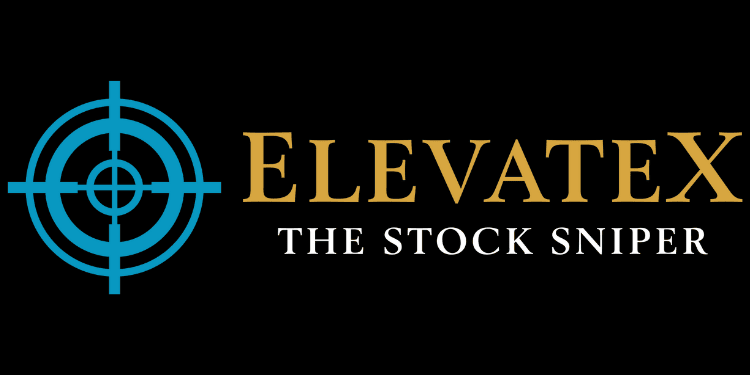- Live Life Grow Wealth
- Posts
- 🏦Series 6 Day 3: Understanding Dollar-Cost Averaging
🏦Series 6 Day 3: Understanding Dollar-Cost Averaging

Today’s Headline
🏦 Series 6: Advanced Topics (For Curious Learners)
Day 3: Understanding Dollar-Cost Averaging
When I first started investing, I was obsessed with finding the perfect time to buy. I would watch the charts, refresh the prices every few minutes, and convince myself that if I just waited a little longer, I could buy at the lowest point. The problem was, that “perfect time” almost never came. Sometimes the prices went up before I bought. Sometimes I panicked and bought too soon. That’s when I discovered a simple but powerful strategy called Dollar-Cost Averaging — or DCA for short.
This approach changed the way I looked at investing forever. It helped me take emotions out of the equation and build wealth steadily, even when the market was unpredictable. Today, I want to help you understand how this works, why it’s such a powerful tool, and how you can use it to grow your investments with less stress and more confidence.
“Imagine converting your customer calls into revenue-generating assets — discover how Synthflow’s AI-powered WhatsApp & voice agents are being used by fintech firms to scale without hiring more staff.”
Introducing WhatsApp Business Calls in Synthflow
65% of people still prefer voice, but 40% of business calls go unanswered. Now Synthflow Voice AI Agents can answer WhatsApp calls directly — resolving issues, booking, and following up 24/7 with full analytics.
What Exactly Is Dollar-Cost Averaging?
Dollar-Cost Averaging is a fancy term for a very simple concept: investing a fixed amount of money at regular intervals, no matter what the market is doing.
Let’s say you decide to invest $500 every month into an index fund. Sometimes the price per share will be high, and sometimes it will be low. When prices are low, your $500 buys you more shares. When prices are high, your $500 buys you fewer shares. Over time, this strategy helps you “average out” the cost of your investments.
You don’t have to guess when the market will rise or fall. You just stay consistent.
That’s it — simple, but incredibly effective.
Why DCA Works So Well
The beauty of Dollar-Cost Averaging lies in discipline. Most people lose money because they let emotions drive their decisions — fear when prices drop, and greed when prices rise.
DCA removes both emotions from the picture.
Here’s why it works so well:
You buy more when prices are low.
When the market dips, your regular contribution buys more shares automatically. You’re essentially “buying the dip” without even trying.You buy less when prices are high.
When the market is expensive, your fixed amount buys fewer shares — preventing you from overpaying.You stay consistent.
This builds the most important habit in investing — consistency. Over time, staying invested matters more than timing it perfectly.It reduces regret.
You’ll never have to beat yourself up for “buying at the wrong time.” You’re always buying — and that’s the point.
Timing the Market vs. Time in the Market
Many beginners think the secret to getting rich is timing — buying low and selling high. In theory, that’s true. But in practice, even professionals struggle to do it consistently.
The truth is, the biggest wealth in investing comes not from timing the market, but from time in the market.
If you look at historical data, you’ll notice that markets tend to go up over long periods despite short-term ups and downs. By using DCA, you’re letting time do the heavy lifting for you. You’re not trying to catch every small move — you’re focusing on the long game.
This is what separates patient investors from emotional ones.
An Example of How DCA Works
Let’s make it simple with an example.
Imagine you invest $500 every month in a fund whose price changes like this:
Month | Share Price | Amount Invested | Shares Bought |
|---|---|---|---|
Jan | $10 | $500 | 50 |
Feb | $8 | $500 | 62.5 |
Mar | $5 | $500 | 100 |
Apr | $10 | $500 | 50 |
May | $12 | $500 | 41.7 |
After 5 months, you’ve invested a total of $2,500 and own about 304 shares. Your average cost per share is roughly $8.22 — even though prices went as high as $12.
If you had tried to time it and only bought once, you might have paid $10 or $12 per share. But by spreading it out, you took advantage of market dips and ended up with a lower average cost.
That’s the magic of DCA — steady, automatic, and emotion-free.
The Psychological Benefit
Beyond numbers, there’s something powerful about how DCA affects your mindset.
When markets crash, most people panic. They sell off their investments in fear, locking in their losses. But if you’re following a DCA plan, you actually look forward to downturns — because you’re buying more shares at a discount.
That shift in perspective changes everything. You stop fearing volatility and start embracing it. You understand that every dip is an opportunity, not a disaster.
That’s how true investors think.
When Dollar-Cost Averaging Might Not Be Ideal
While DCA is a great strategy, it’s not perfect for every situation.
Here are a few cases where it might not be ideal:
If you already have a large lump sum ready to invest.
Statistically, investing it all at once (known as “lump-sum investing”) often performs slightly better on average than spreading it out — because markets tend to rise over time. However, emotionally, many people prefer DCA because it feels safer.If you’re investing in something extremely volatile.
While DCA helps with volatility, it’s not a shield against bad investments. Always make sure what you’re investing in has solid fundamentals.If your fees are high.
Some platforms charge per transaction. If you’re investing small amounts frequently, fees can eat into your returns. In that case, it might be better to invest quarterly instead of monthly.
The key is to find a balance that fits your comfort level and long-term plan.
Find your customers on Roku this Black Friday
As with any digital ad campaign, the important thing is to reach streaming audiences who will convert. To that end, Roku’s self-service Ads Manager stands ready with powerful segmentation and targeting options. After all, you know your customers, and we know our streaming audience.
Worried it’s too late to spin up new Black Friday creative? With Roku Ads Manager, you can easily import and augment existing creative assets from your social channels. We also have AI-assisted upscaling, so every ad is primed for CTV.
Once you’ve done this, then you can easily set up A/B tests to flight different creative variants and Black Friday offers. If you’re a Shopify brand, you can even run shoppable ads directly on-screen so viewers can purchase with just a click of their Roku remote.
Bonus: we’re gifting you $5K in ad credits when you spend your first $5K on Roku Ads Manager. Just sign up and use code GET5K. Terms apply.
How to Start Your Own DCA Plan
Setting up your DCA plan is easier than you think. Here’s how you can do it:
Pick your investment vehicle.
This could be an index fund, ETF, or even a REIT. Choose something diversified and stable.Decide your contribution amount.
Start small if you have to — even $100 a month can make a difference over time.Set a schedule.
Automate your contributions monthly or bi-weekly. The less you think about it, the more consistent you’ll be.Track, but don’t obsess.
Review your investments every few months, not every day. Remember, this is a long-term game.Increase over time.
As your income grows, increase your contributions. Small boosts make a huge difference over years.
The secret is consistency. The moment you make it automatic, it becomes part of your lifestyle — like saving or exercising.
The Real Value of DCA
What I love most about Dollar-Cost Averaging isn’t just the financial benefit. It’s the emotional freedom it gives.
It teaches you patience.
It keeps you calm during chaos.
It helps you see the bigger picture.
You stop chasing quick profits and start focusing on real, steady growth. It’s not about luck — it’s about habit.
Every successful investor I know uses some form of DCA because it turns investing into a routine, not a gamble.
My Takeaway for You
If there’s one thing I’ve learned from years of investing, it’s this: success doesn’t come from making one big move — it comes from making the right small moves again and again.
Dollar-Cost Averaging may sound boring, but it’s one of the most reliable paths to long-term wealth.
Start small, stay consistent, and let time do the compounding for you.
Final Takeaways
Investing isn’t about predicting the future — it’s about preparing for it. And DCA is one of the smartest ways to prepare. It doesn’t matter if you’re young or old, rich or just starting out — this strategy works because it builds discipline and peace of mind.
So if you haven’t already, start your DCA journey today. Choose a good fund, set an amount you’re comfortable with, and automate your contributions.
Let your money work for you — quietly, steadily, and powerfully.
Because wealth isn’t built overnight.
It’s built one month, one contribution, one disciplined habit at a time.
Call to Action:
If this concept resonated with you, take five minutes today to create your own DCA plan. Whether it’s $100 or $1,000 a month, start building your future today. Don’t wait for the “perfect time” — start now, and let consistency be your greatest investment superpower.
[Live Life Grow Wealth]
🎓 Free Masterclasses to Unlock Your Investment Potential
Take your money skills to the next level with expert-led workshops designed to help you grow smarter and faster.
Recommendations Section
“Peek into smart money moves — when big players act, you’re in the loop.”
|
Learn simple, proven ways to grow your money — straight from real investors who walk the talk.
|
“Hone your investing edge in just 5 minutes — smart, snappy insights to power your portfolio growth.”
|
“Stay ahead with one expert-picked stock monthly — clear, no jargon, built for growth.”
DISCLAIMER
I make no representations, warranties, or guarantees, whether expressed or implied, that the content provided is accurate, complete, or up-to-date. Past performance is not indicative nor a guarantee of future returns.
I am an individual content creator and not regulated or licensed by the Monetary Authority of Singapore (MAS) as I do not provide investment services.
All forms of investments carry risks, including the risk of losing your entire invested amount. Such activities may not be suitable for everyone. You are strongly encouraged to seek advice from a professional financial advisor if you have any doubts or concerns.








